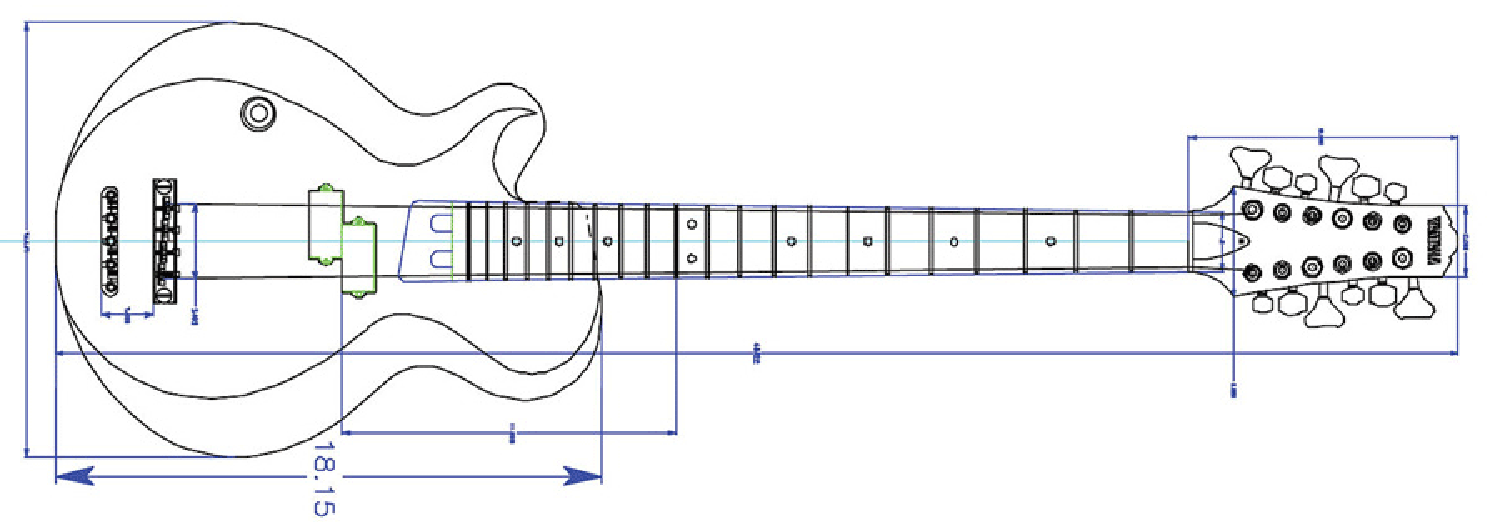The Standard String Arrangement
Hades 12-string bass strung Standard - the octave strings in each group are above the fundamental string.
Over 95% of all 12-string basses are strung with the Standard string arrangement, which means that the octave strings being are above or on top of the fundamentals. This is the same arrangement that is used for 12-string guitars, but of course the guitars have only one high-octave string for each of the six fundamentals. Since most 12-string players use a pick and primarily play down strokes, this arrangement tends to accentuate the high-octave strings since they are struck first and with the most energy.
It is frequently stated as gospel that the Standard arrangement is designed for players who use a pick when they play, and the Inverted arrangement is designed for fingerstyle players. This statement has never made any sense to us as it makes a big assumption: It presumes that you want to strike the high-octave strings first, thus accentuating the high end.
Hagstrom model H8 8-string bass.
In the 1970's Tom Petersson had been using a Hagstrom 8-string bass similar to the one pictured above, which is strung Standard. The first Hamer Quad 12-string bass and all of Petersson’s subsequent 12-string basses have always been configured this way. According to Jol Dantzig of Hamer Guitars, this was because Tom plays using a pick. It was thought that if the Inverted arrangement were employed, striking the fundamental string first would tend to make the pick bounce over the higher octave strings, resulting in reduced high end.
The Standard configuration gives the instrument the typical 12-string “sound“ as demonstrated by such players as Tom Petersson or Doug Pinnick. Also, based upon the vast majority of 8-string basses being similarly strung, it is apparent that the Standard format is the preferred method for almost every manufacturer of 8-string and 12-string basses.
